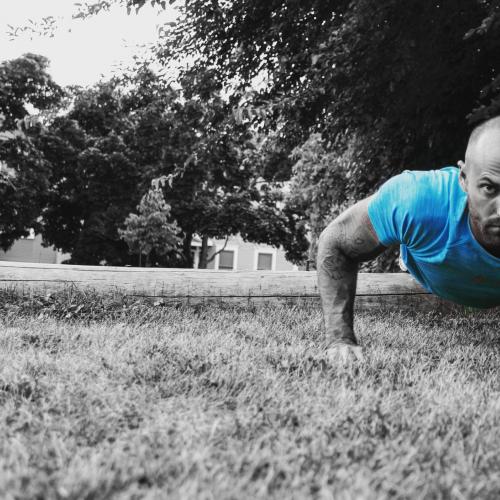Far more jobs are desk-based than ever before, and sitting for the majority of our days is the new reality for many of us. The unfortunate side effect is a negative impact on our health – sitting that much not only isn’t good for our bodies, and especially our hearts, but it can also negatively impact our mental health, causing depression. And then there’s our posture: check yours right now. Are you slouching? Leaning forward? If you’ve noticed neck and back pain developing after sitting at your desk all day or all week, chances are you’re not just sitting too much – you’ve also got some bad sitting habits.
The good news is, not only are you not alone, but there’s also some easy steps you can take to help prevent that pain from developing in the first place.
1. Fix your computer setup

You don’t want to be leaning forward towards your computer screen and keyboard all day, but a lot of us do. The best way to correct this habit is to make sure your computer screen is both at eye level and arms-length away, so your wrists are straight. This means that the top of your monitor or laptop screen should be at eye level. If you’re working at a laptop, this may be more difficult. See if your workplace would provide a docking station and adjustable screens, and if that’s not possible, you may have to place something under your laptop to lift it up. The most important thing is that you’re not both leaning forward and looking down, as this places strain on your neck and your back over time.
Have a job in customer service or sales, or something where you’re on the phone a lot all day? Ask your boss for a headset, which will keep you from cradling the phone and leaning your neck to one side all day.
2. Find the right chair

The chairs we sit in play a major part in our posture habits too. You want one that is positioned upright, and fits the curve of your lower back naturally. You should also be able to place both feet squarely on the floor; if you can’t, either reposition your chair’s height or find a footrest.
Also, uncross those legs! And if you’re a sloucher, even with the proper chair, try adding a lumbar support pillow.
3. Keep your ears in line with shoulders and pull back those shoulder blades
These are both good tricks to make sure you’re not leaning too far forward or backward as you sit. And pulling back your shoulders helps keep your back straight, preventing rounded and droopy shoulders.
4. Stretch throughout the day
One of the most effective ways to improve posture and pain is to take stretch breaks every couple of hours. A couple of easy ones to try:
- Extend your arms straight overhead, leaning side to side to stretch your back and shoulders.
- Stretch your right arm across your body in front of your chest, and hook your left arm over the right elbow. Repeat with the left arm.
- Stretch your calves by extending your legs straight out in front of you (while sitting) and flexing your feet, with your toes pointed towards the ceiling.
- You can also try stretching your calves by placing both hands square on a wall in front of you, lifting the toes of one foot onto the wall, and leaning forward until you feel the stretch in your calf muscle. Repeat with both legs.
5. Move throughout the day

Because we’re sitting so much, it’s important to take a break about every hour to walk around and get your blood circulation flowing again, even if only for five minutes. Work in an office with stairs? Try going up or down the stairs a few times. Get outside and walk around the block, and walk to lunch if possible. Suggest a standing meeting for your next team brainstorm. Or simply walk around and say hi to a few co-workers – there are a lot of different ways to keep moving through your day.
6. Find a buddy!

Everything’s better and easier with a friend. Find a workplace pal to take regular stretch breaks or walks with – you’ll hold each other accountable and get a nice refreshing break in your day as you walk and talk or laugh through your stretches. Also, set a timer to remind you when it’s time for your break.
7) Build strength – especially in your core – at home

One of the best ways to prevent pain from sitting at work is regular exercise when you’re off-the-clock. Both cardio activities, like walking, cycling, or swimming, and strength conditioning are effective. Planks are an especially effective way to tone your whole body and your core; try starting and ending each day with a 60-second plank.

